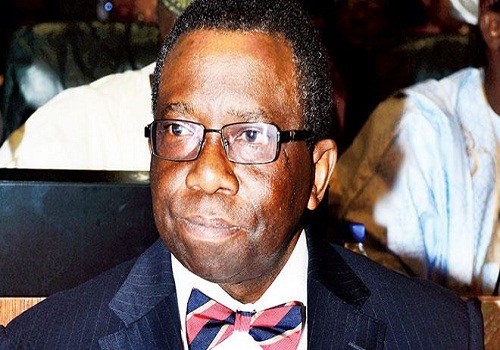Adewole said this in Abuja on Tuesday during the signing of a Memorandum of Understanding between the Sokoto State Government and the Federal Government-owned Usman Danfodiyo University Teaching Hospital, Sokoto, on Strategic Partnership for the Enhancement of Health Care Delivery in Sokoto State.
He said the agreement was a great feat and was one of the best things that had happened to the nation’s health system.
Adewole said there were many states across the nation which did not have enough state doctors but had many federal medical personnel who were not being used.
The minister said he had tried to achieve the feat when he was Provost, College of Medicine, University of Ibadan, but the effort was thwarted by “doctors on the state side.”
Adewole added, “What we are trying to do is bridge the gap between federal and state governments. There should be no wall. This feat we are achieving today is the first of its kind in this country.
“It is not only peculiar to Sokoto State. I was in Zamfara. At the Federal Medical Centre in Zamfara, there are about 120 doctors but the state has less than 40 in the entire state, in fact they were 23 or so as at the last count to manage 24 hospitals.
“So, it is a matter of one doctor per hospital. And, yet, the federal hospital has about 120. To me, that is inequality, inequity and must not persist in our country. This is because those who are not benefitting are also Nigerians. It is our duty to address these things and also ensure we offer our people good care.”
He explained that what the “agreement will do is to transfer quality services from the teaching hospital to the communities.”
Adewole urged Governor Aminu Tambuwal of Sokoto State to encourage his colleagues to enter into similar agreements with the Federal Government.
The Chief Medical Director of the Usman Danfodiyo Teaching Hospital, Sokoto, Dr. Yakubu Ahmed, disclosed that the hospital had over 100 consultants, 400 resident doctors and 750 nurses.
He added, “If you compare us with the state, we have a large concentration of personnel in the hospital. One important thing to note is that anytime we are recruiting new members of staff, the ones in the state will migrate into the teaching hospital.”
With the arrangement, doctors, nurses and other health workers in the teaching hospital would assist in other public hospitals in the state based on the mode of deployment by the MoU, even as they remain employees of the Federal Government.
About six state general hospitals will benefit from the arrangement.
Ahmed said resident doctors at the teaching hospital would be deployed to rural communities in the state, and they would be supervised by consultants from the hospital.
He revealed that referrals to the hospital were close because of the huge concentration of experts in the facility, and that about 90 percent of patients in trauma die before getting to the hospital.
The doctor added, “We have noticed that when we reviewed the number of patients that are brought in dead into the hospital, we found out that 90 per cent are due to accident, and the remaining 10 per cent due to other cases.
“When we further reviewed the remaining 90 per cent, we found out that only 10 per cent died at the scene of the accident, 90 per cent died along the way before reaching the hospital.”
In his remarks, Tambuwal said there was huge manpower at the Federal Governments’ teaching hospital in the state “and this MoU is seeking to unbundle and unleash the skills of the workforce across communities in the state.”
Source:Premiumtimes

 The Minister of Health, Prof. Isaac Adewole, has said that Zamfara State with 24 state hospitals has only 23 doctors managing these health institutions. This, the minister noted, had been negatively affecting the health care delivery in the state.
The Minister of Health, Prof. Isaac Adewole, has said that Zamfara State with 24 state hospitals has only 23 doctors managing these health institutions. This, the minister noted, had been negatively affecting the health care delivery in the state.




